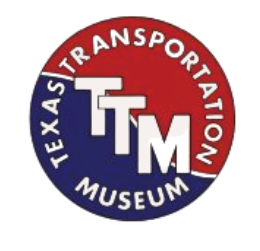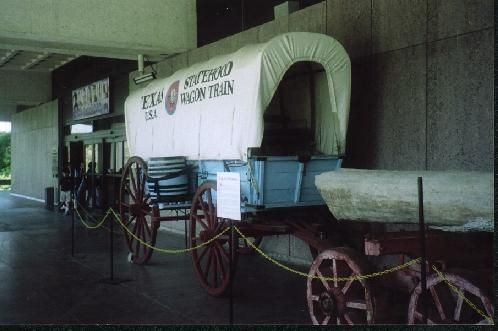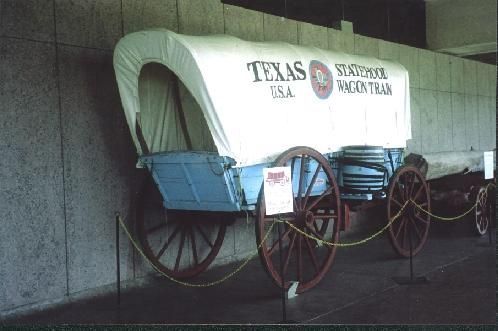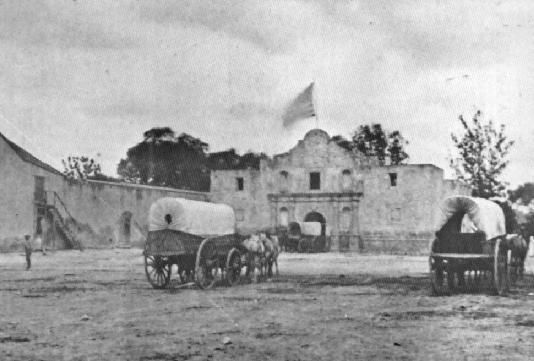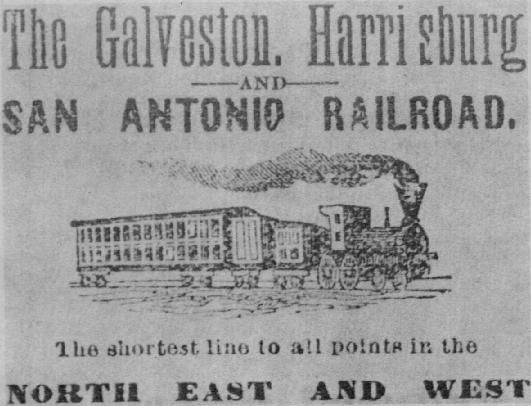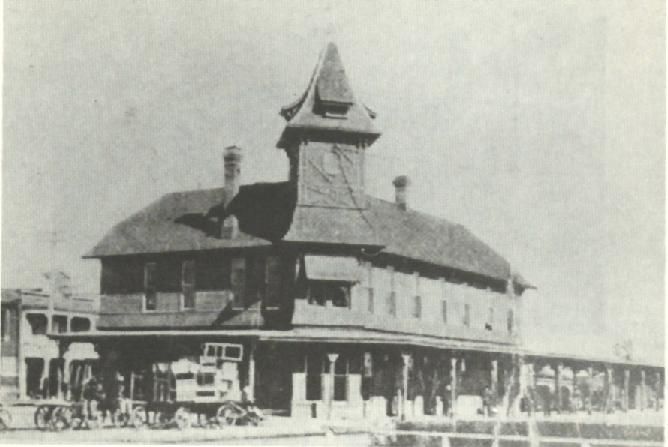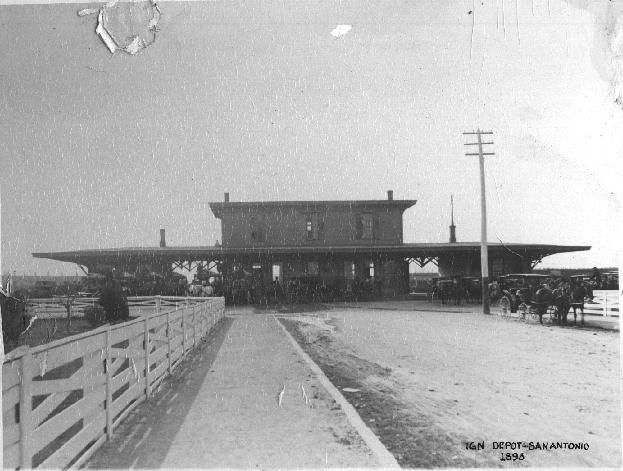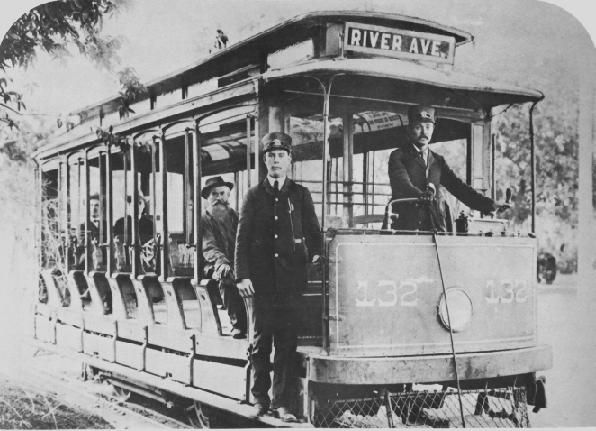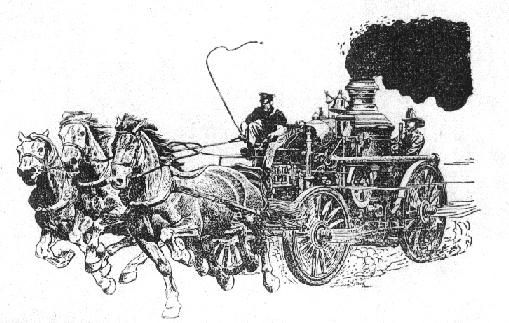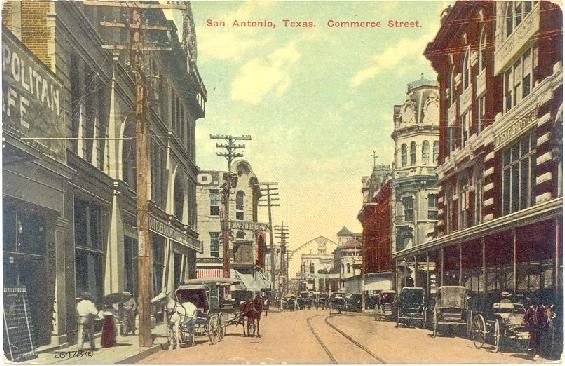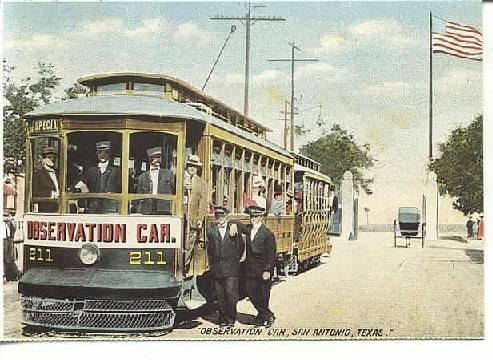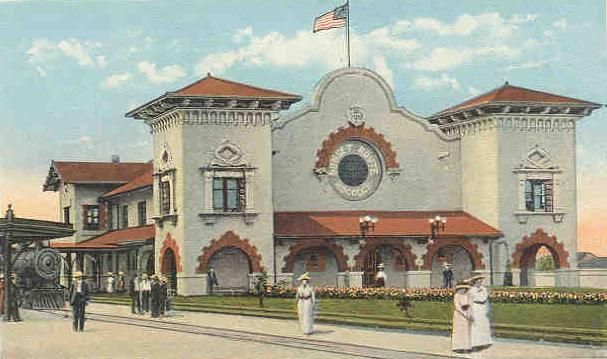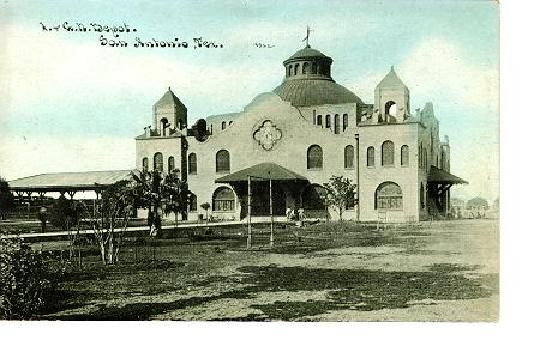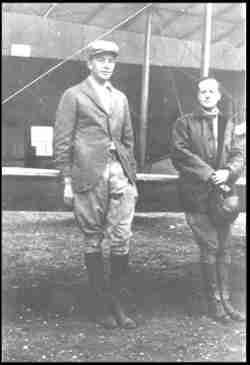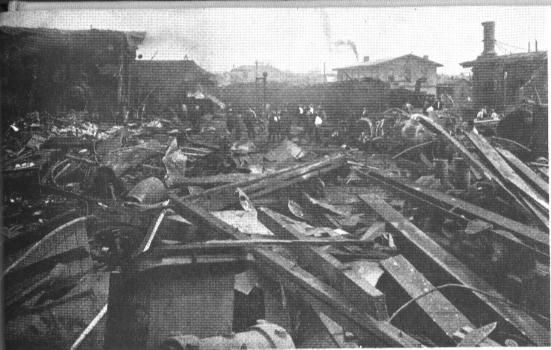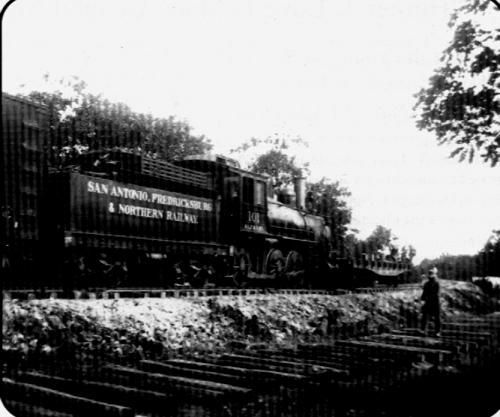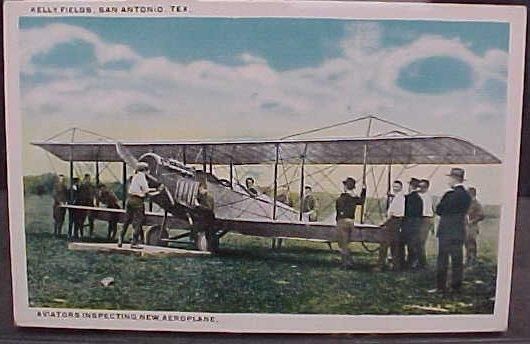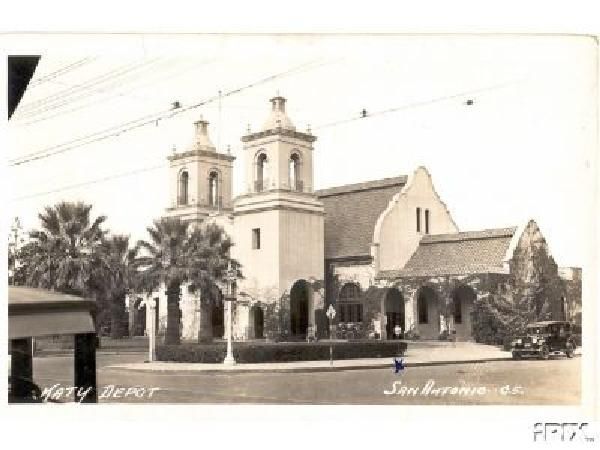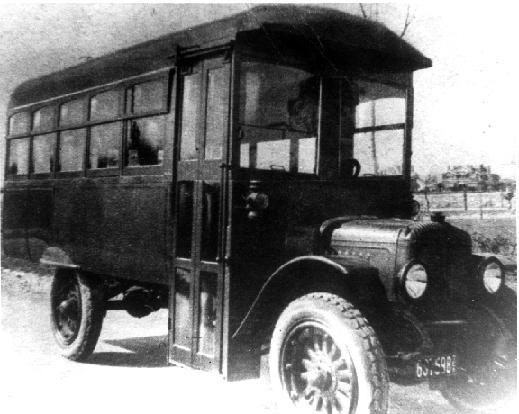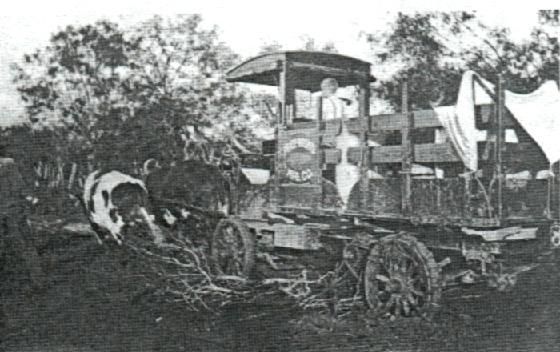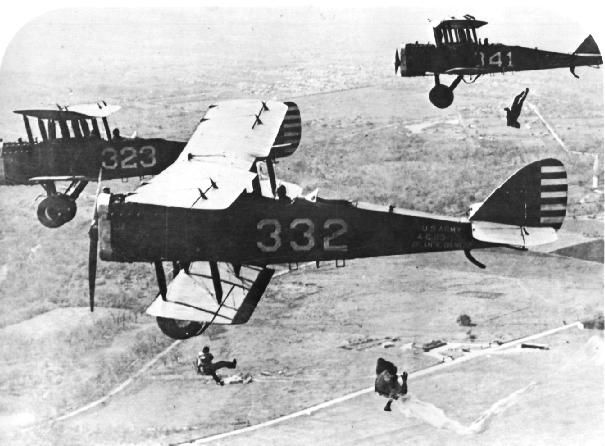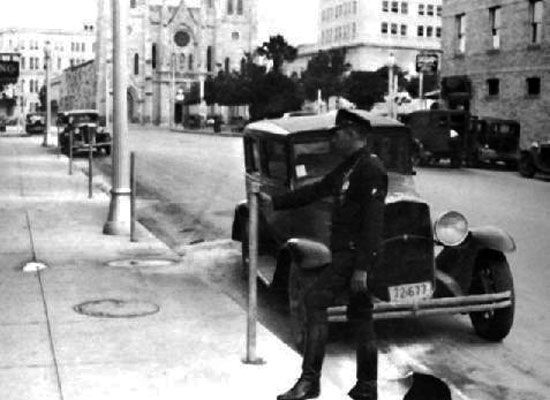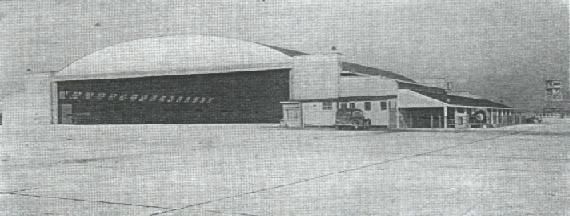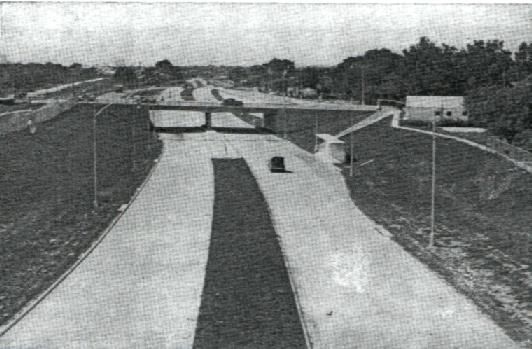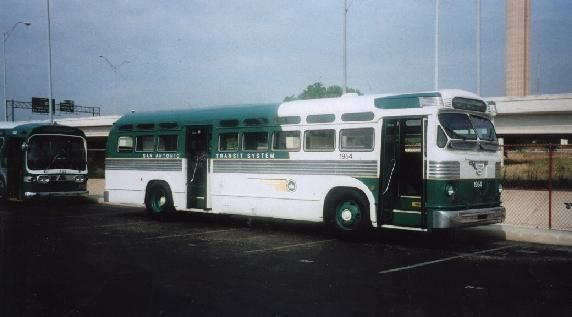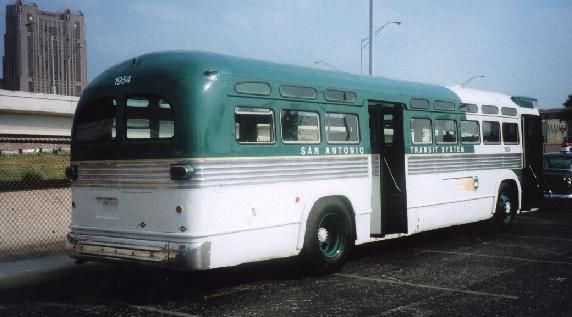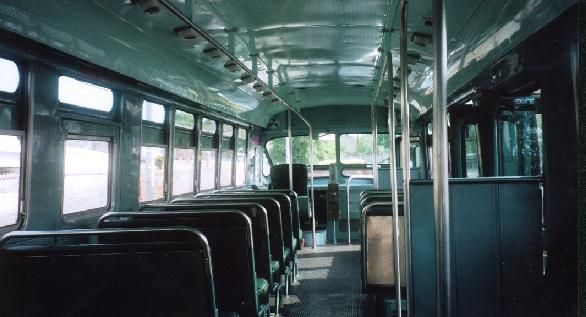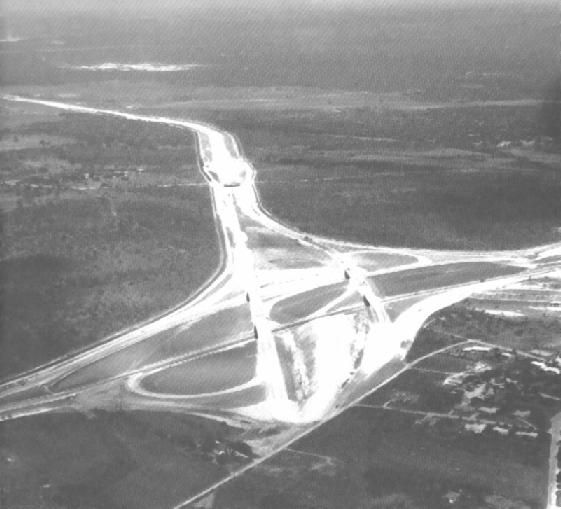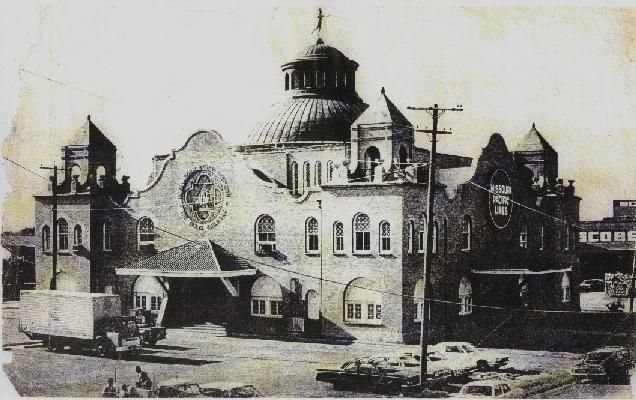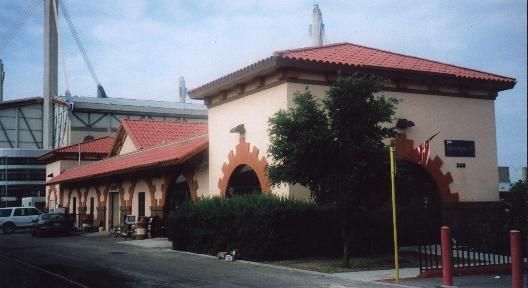San Antonio Transportation History

The Texas Transportation Museum is indebted to The Institute of Texan Cultures, The San Antonio Conservation Society, and the Daughters of the Republic of Texas for some of the pictures on this Transportation History page.
1841
First all traffic heavy duty wooden bridge over the river, between Main Street and Alameda, now called Commerce Street.
1847
Texas United Stated Mail Line begins twice weekly stagecoaches between Houston and San Antonio.
1848
Expedition sets out for El Paso but is unable to get beyond Big Bend country.
Bimonthly stage coach service running between San Antonio and Corpus Christi, later extended to Brownsville.
Stage coach service from San Antonio to Austin by Tarbox & Brown.
1849
Stage coach service from San Antonio to Port Lavaca.
First successful journey from San Antonio to El Paso.
1850 s
Freight charges from Matagorda bay were 1 1/4 cents per pound. Two types of wagons were used. Mexican 'cartas', large, square, single axled wagons with massive, solid, six foot wheels. Pulled by two oxen, they were slow, but would get through mud and rain. Anglo 'Prairie Schooners', huge, long, two axled wagons, covered with canvas, which were pulled by two horses or mules. They were faster, but more delicate. On a good day, a 'carta' could travel three miles, carrying one bale of cotton.
Initially, most San Antonio trade was with Mexico and wagon trains of one hundred mules were not uncommon. This began to change with the development of sea ports and better connections with the north. Cattle drives set out to wherever the best prices could be found. A steer worth $14 in Texas fetched $100 in California, but the drive took over five months.
1850
Largest wagon train in history, 340 loaded wagons plus animals, to populate El Paso.
Both the city of San Antonio and Bexar County invest in a railroad to serve the city from Indianola. Both entities sue to have their investment returned when the project fails, causing an aversion to further railroad projects for almost three decades.
1851
Henry Skillman begins running a stage coach service between San Antonio and El Paso.
Stagecoach service from San Antonio to Indianola.
An Irish nuns wrote, describing their trip to San Antonio from Galveston, "The roads are nothing more than pathways beaten by use though the prairies". And, of conditions in winter, "You can scarcely imagine anything so horrible as the Texan mud. The bogs of old Ireland could never come up to this".
1853, November 24
A visit to the town by General Thomas J. Rusk, a railroad spokesman.
1855
Stage coach service between San Antonio and Santa Fe established.
1857
George S Giddings takes over the El Paso contract and extends service to San Diego, CA. It initially took seven weeks to travel the 1,476 mile journey but this was cut to fours weeks. Called the Southern Overland Mail, the service lasted until the beginning of the civil war.
Cart War breaks out s tension between ox drawn carts and mule drawn wagon escalates.
1866
Stage coach service between San Antonio and Monterrey, Mexico established.
1869
First velocipede in San Antonio.
First iron span over the river, a footbridge only, installed, at St. Mary's.
1871
Mule drawn omnibus service begins. It cost 5 cents to go from main Square to Alamo Plaza.
1874
The San Antonio Street Railway Company was formed but no service until 1878.
1877, February 2
The arrival of the first steam train arrived on tracks laid by the Galveston, Harrisburg & San Antonio Railroad. It was a "smoke belching, stove-pipe model pulling a baggage car and one passenger coach, filled with officials. The train was met by a band, and it's arrival was celebrated by half the town's population, some 8000 people.
1878, June 22
The first mule drawn street car begins service. It went from San Pedro Springs to Alamo Plaza.
1881
The arrival of the second railroad, the International & Great Northern (I & GN). Their lines came from the North east.
1883
The first train arrived from San Francisco on a line built by the Southern Pacific.
1884
San Antonio & Aransas Pass Railroad (SA & AP) was formed, with it's general offices in San Antonio. A depot is built, at the corner of Alamo and South Presa.
1885
The SA & AP railroad made its inaugural trial run to and from Floresville.
1886
The SA & AP reached Corpus Christi, making a closer deep water port than Galveston accessible to San Antonio, plus creating a flurry of economic growth in the rich farm land areas towards the Rio Grande Valley.
1887
The SA & AP was running three passenger trains and up to six freights a day into and out of San Antonio.
Inaugural public train to Boerne, TX, 31 miles to the north, It cost 95 cents and took two hours.
1889
Important downtown streets are paved with mesquite blocks.
1890
Electric streetcars introduced. Lines run by a different company using different colors and even gauge proliferate. A temporary electric streetcar was set up to deliver visitors to the "International Fair," south of the city center at Riverside Park. One the fairs features was a 'Southern Pacific" day.
First traffic signal light in San Antonio was installed on Commerce Street, opposite the first I & GN depot.
1891
The first professional fire company was formed and two horse-drawn steam pumpers, like the American LaFrance pumper at the Texas Transportation Museum, were acquired.
Four different street car companies are operating in San Antonio; The Belknap, the McCrillis, the West End and the Alamo Heights.
First bicycle club, the San Antonio Wheelmen, is formed.
1893, December 22
The San Antonio & Gulf Shore Railway was chartered.
1897
Probable first horseless carriage in San Antonio, an electric belonging to Montgomery Ward.
The San Antonio & Gulf Shore, following a bankruptcy, was sold and becomes the San Antonio & Gulf Railroad.
1898
Several block of Market Street on either side of the intersection with St. Marys are crudely asphalted. Along with a similar project in Houston, these are the first paved roads in Texas.
1898, May 30
Teddy Roosevelt and the Rough Riders leave San Antonio for Cuba from the SA & AP depot.
1899
Houston Street takes over from Commerce as the city's main commercial and shopping street, in part because vendors on the already too narrow Commerce persuade city leaders to place the tracks on the next street up, which is wider and less cluttered with hitching posts, etc.
First horseless carriage, an electric, is delivered to the Staacke Brothers on Commerce Street.
1901
First gasoline powered automobile, a Haynes-Apperson, arrives in San Antonio.
All street car companies are consolidated into one, the San Antonio Traction Company.
The Southern Pacific completes its new depot on East Commerce Street.
1902
Sale of first car by a San Antonio dealer, a Curved Dash Oldsmobile.
First steam, electric and gasoline automobile adverts appear in the newspapers.
1903
San Antonio Automobile Club formed.
1904
The arrival of the first steam train arrived on tracks laid by the Galveston, Harrisburg & San Antonio Railroad. It was a "smoke belching, stove-pipe model pulling a baggage car and one passenger coach, filled with officials. The train was met by a band, and it's arrival was celebrated by half the town's population, some 8000 people.
1905
First motorized vehicles take part in Battle of Flowers parade.
Horse, electric, gasoline and steam powered vehicles compete to make their way on San Antonio Streets. Motorized vehicles take part in Fiesta parades.
The San Antonio & Gulf is consolidated into the Galveston, Harrisburg & San Antonio Railroad.
1906
The I & GN, later the Missouri Pacific, begins construction of it's new "Moorish design" depot at the corner of Commerce and Medina.
1907
The new Southern Pacific depot is gutted by fire.
1910
First set of traffic rules dealing with automobiles published.
Twin span Hays Street bridge installed to accommodate more railroad tracks for the Southern Pacific.
1910, March 2
First US flight of a military owned plane took place in San Antonio, piloted by Lt. Benjamin Foulois. It cost the Army $300 to assemble the $150 Wright Brothers plane that arrived in 17 crates. Lt. Foulois learned to fly using a correspondence course. His flight, at Mac Arthur Field, Ft. Sam Houston, lasted from 9:30 AM to 9:37, attaining an altitude of 100 feet. He made his maiden flight, his first solo flight and his first crash landing all at the same time.
1911, May 11
Lt. George Kelly becomes the first military pilot killed in a plane crash.
1912
Widening of Commerce Street begins.
Federal funds build a sixteen feet wide macadam road between San Antonio and Austin.
1912, March 18
The boiler of a Southern Pacific steam locomotive exploded, killing 26 people. The locomotive was being repaired in the railroads shops at the south of town.
1913
Broadway is created out of River Avenue and Avenue C.
1913, January 13
The San Antonio, Fredericksburg & Northern Railroad is chartered.
1913, November 1
The 25 mile line, from the Fredericksburg junction on the SA & AP line just east of Comfort, and which necessitated the building of a tunnel, is completed.
1915
The entire US air force, all six planes, is located, under Lt. Foulois, at Fort Sam Houston.
The Stinson family open their civilian flying school and airfield south of town. Now know as Stinson Municipal Airport, it is the second oldest continuously operating civil airport in the USA.
The "Old Time Trail Drivers Association" is formed.
1917
The military buys the San Antonio Flying Field and renames it Kelly Field, for Lt George Kelly, first military pilot casualty, who crashed avoiding soldiers near Fort Sam. Brooks Field is also created, also named for a military pilot killed in a crash.
The first MKT , Missouri-Kansas-Texas, train arrives at their new depot on the corner of Durango and S. Flores. Interestingly, the depot was built by the San Antonio Belt & Terminal railway, a company created by the MKT, and was then immediately leased to the MKT for 99 years.
The San Antonio Traction Company and the San Antonio Gas & Electric Company are consolidated into the San Antonio Public Service Company. The new company builds the city's first motorized bus to serve Fort Sam Houston.
The US's first military balloon school opens.
1917, December 31
Having proven to be unprofitable, the San Antonio, Fredericksburg & Northern Railroad was sold at a foreclosure sale. It was bought by a Martin Cole, who deeded the railroad to the Fredericksburg & Northern Railway Company.
1919
San Antonio TxDot offices open, as headquarters of one of the initial six divisions. TxDot was created in 1917.
The new Fredericksburg & Northern Railroad fared much better than its predecessor. It grossed $15,353 and showed a profit of $3,003. The railroad continued to grow and had two locomotives. Servicing the debt of acquisition, itself a hangover from the initial company's failure to pay construction costs, would bedevil the railroad.
Texas Headquarters of the "Old Spanish Trail" moved to San Antonio.
Lone Star Motor Company sets up an automobile and truck plant at 515 Roosevelt.
1923
First "store bought" bus arrives in San Antonio.
1925
Southern Pacific takes over the SA & AP. Depot is leased out and is used by a furniture store for almost ten years.
1927, May 19
The movie "Wings", filmed in San Antonio wins the first ever best picture Oscar.
1928
First air mail service from San Antonio begins. Marjorie Stinson is the pilot. Her destination? Seguin, thirty miles away.
Motorists are still being advised not to leave San Antonio in their cars if has recently rained or if the forecast says it might.
1929
"Old Spanish Trail" completed, 14 years after it began, running from St. Augustine, FL, to San Diego, CA, but lacks a hard surface over its entire 2,817 mile length. Within Texas the route becomes HWY 90 and runs through San Antonio.
New bus terminal is opened at the corner of Martin and Navarro.
Post Road between San Antonio and Austin, renamed Route 3 by TxDOT, then HWY 81 under the national numbering scheme introduced in 1925, is widened to forty feet and straightened, reducing its length by eight miles. Total right of way width is now 100 feet.
First combat parachute demonstrations take place at Brooks Air Force Base.
1930, June 20
Randolph Field, at the time the world's largest air field and training center, is dedicated.
1932
San Antonio Police Department (SAPD) patrol cars fitted with receive only radios to get orders from central dispatch.
1933
The electric street railway system is abandoned, the first large city to do so. They are replaced by motorized buses.
1936
The first parking meters are installed.
1939
Old SA & AP depot is demolished.
1940
The municipal airport is completed.
1941
Wartime gasoline rationing is introduced at five gallons per month.
1942
Lackland Air Force base suddenly grows from a mesquite covered bombing range to the largest training base in the world.
The San Antonio Transit Company is formed. A private company, it takes over the city owned bus network.
1942, July 27
The Fredericksburg & Northern Railway ceases operation. It had been hoped a planned Gulf & West Texas railroad would link up to it and acquire it, but the war ended those plans.
1943
Planning begins for a post war freeway system for the city, which experienced phenomenal growth during WWII.
1944
The airport acquired by the city on the northeast part of town is re-named San Antonio International Airport.
1949
San Antonio's first expressway, HWY 281, is completed.
1951
The first 3/4 mile section of IH 10 is finished, from Woodlawn Avenue to Martin Street.
1953
The first terminal at San Antonio International Airport is opened.
1956
IH 35, from Alamo Street to Broadway is complete.
1957
First section of Loop 410 is finished. IH 35 complete south to Division Avenue.
1958
First section of Loop 1604, between IH 10 and HWY 281, completed.
1959
The city owned San Antonio Transit System takes over the privately run San Antonio Transit Co.
1960
City first mall, Wonderland, now Wonderland of the Americas, is opened
1964
IH 10 W to De Zavala is complete, and to the east the road is done to outside the city. Fist section of Loop 1604, from Bandera to IH 10 is completed.
1964 , July
Last M-K-T railroad passenger train arrives in San Antonio, carrying 70 passengers. Following the loss of it's mail carrying contract to road haulage, the depot is closed for good.
1967
Loop 410 is complete. It is just 49.48 miles long. Loop 1604 west of HWY 90 is complete.
1968
Satellite concourse is added to the terminal at the San Antonio International Airport.
1969
The MKT depot is demolished.
1970, September 21
The last ever Missouri Pacific "Eagle" train unceremoniously departs from San Antonio. It was the only passenger train still using the once bustling depot. The train consisted of two passenger cars carrying 10 passengers from Laredo. None got off and no one boarded in San Antonio.
1971, May 1
The airport acquired by the city on the northeast part of town is re-named San Antonio International Airport.
1977
Loop 1604, 95 miles in circumference, completed.
1978
McAllister free way, the improved HWY 281, is finally opened after a decade long political struggle to prevent its creation.
Via Metropolitan Transit is formed, as a county wide operation.
1979
Last section of Loop 1604 is complete.
1982
Hays Street bridge is closed to vehicular traffic.
1982, December 22
Union Pacific buys the Missouri Pacific.
1984
San Antonio International Airport's second terminal is opened. It is named Terminal One and has 395,000 square feet and 16 gates. The older terminal becomes Terminal Two. It is 210,000 square feet and has twelve gates. The longer of its two main runways is 8,502 feet long.
1988
Union Pacific buys the Missouri Kansas Texas Railroad.
1996, September
Union Pacific "merges" with the Southern Pacific. San Antonio is now served solely by the Union Pacific, which owns all lines in the city and surrounding area. Under the purchase agreement, the Burlington Northern railroad acquires trackage rights through the city and is allowed to serve San Antonio customers independently, an option it has yet to exercise.
1998
AMTRAK moves out of the historic Southern Pacific Depot. The station, owned by the city, had fallen into severe disrepair. AMTRAK only needed a fraction of it's huge space, and was too cash strapped to keep the station in good shape. The depot is leased by an entertainment consortium owned by some of the city's biggest companies and entrepreneurs. A massive restoration project ensues. (For more of this story, see the "San Antonio Depot History" section, at the Longhorn Chapter of the NRHS section of this web site. (still to be completed. 7/12/02)
1999
The new, smaller, AMTRAK depot is opened.
2000
San Antonio International Airport has 12 carriers to 29 destination and 129 daily departures. It handled just under 3,650,000 passengers with just under 250,000 take offs and landings. Its various parking facilities hold over 6,000 cars.
Voters reject attempt to install light rail system in SA.
2006, November 17
Friday – First production vehicles come off the production line at new Toyota factory in San Antonio. Peak production, when achieved, should be one new Tundra pick up every 73 seconds, of 750 a day, 200,000 year.
2010
Toyota moves production of their smaller Tacoma pick-up from California to San Antonio.
Transportation Museum
CONTACT US TODAY
Phone:
210-490-3554 (Only on Weekends)
Email:
info@txtm.org
Physical Address
11731 Wetmore Rd.
San Antonio TX 78247
Please Contact Us for Our Mailing Address
All Rights Reserved | Texas Transportation Museum
